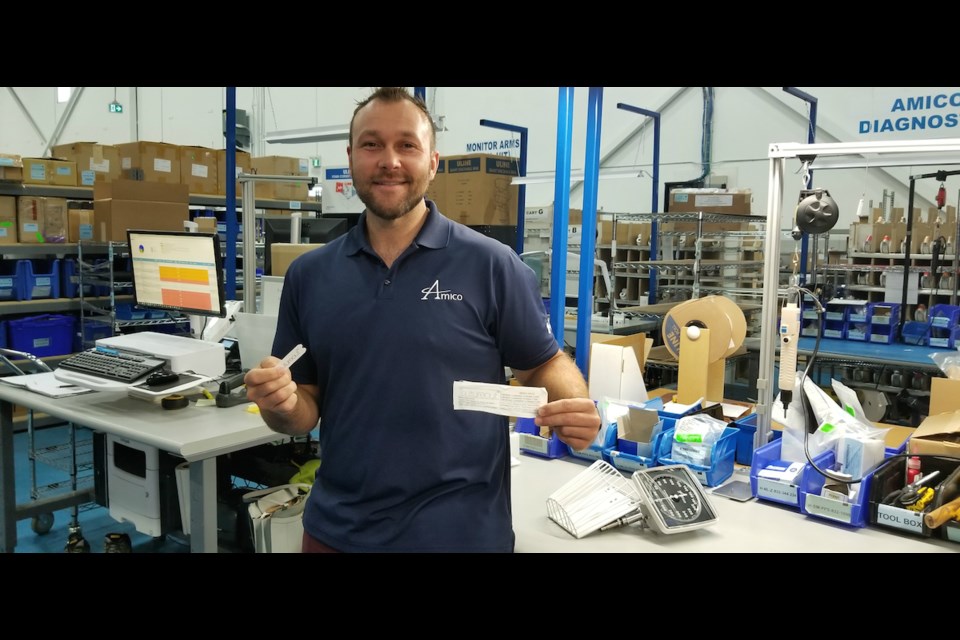Medical device entrepreneur Rishi Sethi truly walks the walk when says he believes in his product.
And he has the stitches to prove it.
Over the past year, Sethi’s voluntarily taken 30 stitches in his back and 10 stitches in one leg, so he could be video recorded later having them taken out with an innovative suture removal tool he co-developed called SutureOut.
Sethi, a 2009 graduate of the University of Guelph Bachelor’s of Commerce program, considers it a vital part of effectively market his product. After all, one of his technology’s main distinctions is that it helps practitioners simply, safely and painlessly remove stitches from patients.
And, he figured, what better way to demonstrate form, function and faith, than to have his own stitches removed?
Sethi’s enthusiasm, coupled with continued distribution growth and awareness campaigns, is working. Although SutureOut started as a side project – and still is – early next year he expects to hit one million tool kits sold.
“Hitting a million kits will be a massive milestone for us, and lead the way for developing new products we have in our pipeline, “ he says.
Sethi, whose main occupation is business development manager for Amico Diagnostic Corporation, will talk about his startup experience and how to manage what’s come to be called a “side hustle” (meaning, a job on the side) over pizza at noon on Monday, Sept. 24, Macdonald Hall Room 218. It’s the first Startup Eat Up event of the new academic year for the university’s Centre for Business and Student Enterprise (CBaSE), in the College of Business and Economics.
“I’ll talk about my connection to Guelph, the story about SutureOut and how I got the company off the ground while working full-time,” he says. “I want to change the meaning of inexpensive medical disposables and the approach to a side hustle at the same time.”
Sethi describes SutureOut as the only “guarded blade” for removing sutures on the market. The low-profile blade is recessed and embedded in a paper guard which enables the stitch to be cut and removed, but prevents the blade from cutting into the patient’s skin. The practitioner simply holds the stitch in place, with forceps.
This method reduces the risk of accidental damage to the wound when sutures are being removed. It eliminates the need to get inside the suture loop to cut it with scissors, the conventional way to remove stitches.
And being made mostly of paper, the device is 95 per cent biodegradable.
Sethi started SutureOut as a side-business, with the support of his employer. He made his intentions clear: Someday, he would like to make SutureOut his full-time business. But until then, he was committed to the job at hand, and credits partners like Canadian Hospital Specialties, Medical Mart and Surgo for their support.
“Smart companies support innovation and creativity, and that’s precisely what companies I’ve worked for do,” he says. “By being forthcoming about my business, we were able to find ways to marry the two. I could not have achieved what I have with SutureOut without their support.”
In fact, he says, the reason he was hired as business development manager at Amico was because of the success he had with SutureOut: Amico wanted him to replicate what he did with SutureOut for the company’s diagnostic line of products.
Side hustles have always been popular, maybe more so now with the higher cost of getting by and the challenges people face just maintaining the status quo, let alone getting ahead. That makes side hustle management a particularly relevant topic for students starting their final year of school and getting ready to join the workforce.
“A side hustle is a low-risk way to explore entrepreneurship and develop yourself professionally,” says Tyler Zemlak, CBaSE’s business incubation services manager. “For post-secondary students this can be a great way to improve some of the most desirable skills needed for the workforce – from active listening to social perceptiveness, and everything in between.”
If you can’t attend Sethi’s CBaSE presentation Monday, check out the SutureOut video here.
